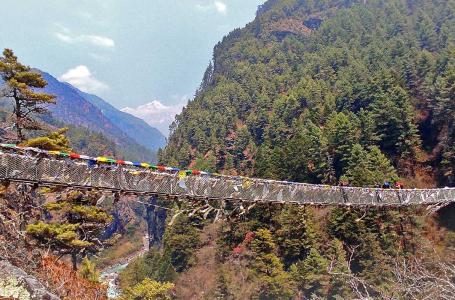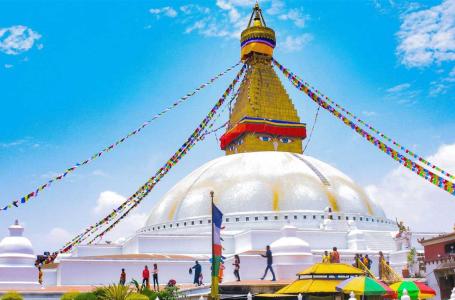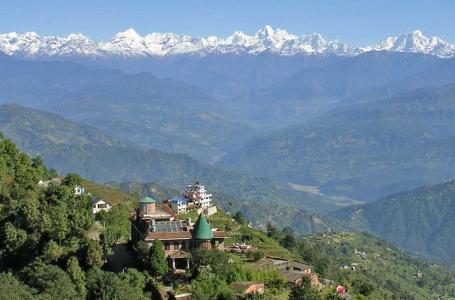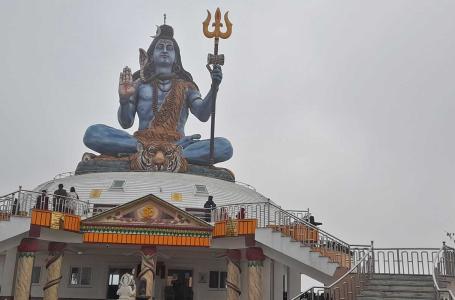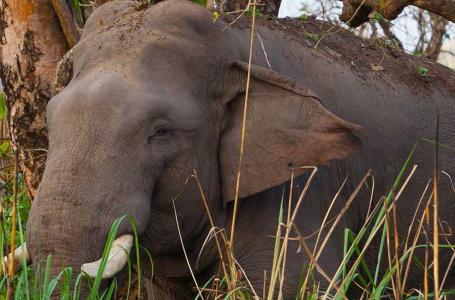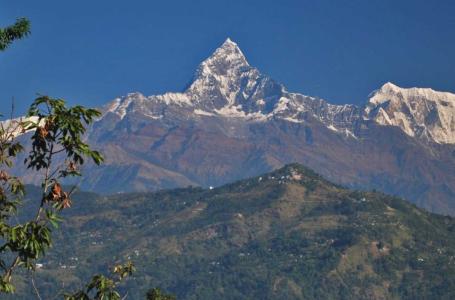Exposed to the breathtaking sceneries of the grand Himalayas, the lake Gosainkunda remains one of the most exquisite locations on the planet. In this Gosainkunda Trek, you will have an opportunity to witness the finest glimpses of the Himalayan lakes and their inspiring vistas. On the way, you will come across some of the elegant Chortens and Mani walls, which invite a peaceful and serene atmosphere. The monastery of Shin Gompa puts a classic touch on the trek to Gosainkunda. Overall, it is fascinating.
Gosainkunda Trek can be attempted at any time of the year except the monsoon (June, July, August) and the winter (December, January, February). In monsoon, the trails become slippery because of the rainwater. So, it is not suitable. Similarly, in the winter, the excessive cold makes Gosainkunda inaccessible, so cold that the lake freezes into ice. Within 5 days, you will be in Kathmandu again. This is the most incredible short-day trek from Kathmandu that anyone, with a healthy bone, can attempt.
Beginners are fine with this trek. Contact us for further information.
Planning a trek to Gosaikunda in Nepal is an exhilarating adventure that requires careful preparation. Plan your trekking itinerary carefully, typically including stops at Dhunche, Shin Gompa, Laurebina, Gosaikunda, and Chandanbari, adjusting it to your pace and preferences.
Acclimatization is essential to avoid altitude sickness, so allocate at least one extra day at Gosaikunda or another high point to allow your body to adjust. Prioritize safety during your trek by carrying a fully charged mobile phone and informing someone of your plans. Lastly, savor the journey by immersing yourself in the stunning Himalayan vistas, lush forests, and local culture along the way. Remember to be environmentally conscious, leaving no trace of your presence, and enjoy the natural beauty that the Gosaikunda Trek has to offer.
Autumn (September, October, and November) is the best time for the Gosaikunda Trek. The weather is stable, the skies are clear, and the temperatures are comfortable for trekking. The trails are dry, offering good grip, and you can enjoy stunning views of the Himalayas. This is also a peak trekking season, so you may find other trekkers to join along the way.
Spring (March, April, and May) is another excellent time for the trek. The weather is warm, and the rhododendron forests along the lower trails are in full bloom, adding to the beauty of the trek. While avalanches are a concern in higher-altitude regions like the Everest and Annapurna areas, they are not a significant issue on the Gosaikunda Trek.
Monsoon (June, July, and August) is not recommended due to heavy rainfall, slippery trails, and leeches in the lower regions. The clouds often block mountain views, reducing the trek's scenic appeal.
Winter (December, January, and February) can be extremely cold, with heavy snowfall making the trail difficult, especially near the Gosaikunda Lake at 4,380m. However, for experienced trekkers prepared for harsh conditions, winter offers a serene and less crowded experience.
Throughout the Gosaikunda Trek, you'll find a network of teahouses and lodges in the villages along the trail. These provide accommodation and meals for trekkers. The quality and comfort of teahouses can vary, but most offer basic amenities such as beds with blankets, shared bathrooms (often squat toilets), and communal dining areas. Remember that facilities may become more basic as you ascend to higher altitudes. Hot showers may not always be available, and heating can be limited at higher elevations.
You can also find a variety of food options but it is recommended to consult your guide for better and hygienic options.
The most common way to reach Dhunche, the starting point for the Gosaikunda Trek, is by taking a local bus. Buses depart from the Gongabu Bus Park in Kathmandu. The journey typically takes around 7-9 hours, depending on road conditions, and offers scenic views along the way. And if you prefer a much more comfortable or faster option, you can also opt for a private vehicle. After reaching Dhunche, we will begin our journey on foot and trek through lush forests, villages, and scenic landscapes to reach Gosaikunda and its surrounding areas.
To trek to Gosaikunda in Nepal, you will need to obtain the necessary permits, including the Langtang National Park permit and local area permit. These permits are essential to ensure your safety, track trekkers in the region, and support local conservation efforts.
Langtang National Park permit:
Cost: Nrs 3000 per person.
Choose one of the two route options to reach Dhunche: via Kakani or Galchi. While the road via Galchi takes around 7 hours to reach Dhunche, the Kakani route takes around 2 hours more because of the bumpy track.
However, the views from Kakani are far off better than those from the Galchi route, particularly the reminiscing views of the Ganesh Himal. So, choose a suitable option for you. Plus, it is better to avoid the bus option and hire a jeep instead (although a bit expensive) because the conditions of the bus are disagreeable.
This first day of the trek is going to be interesting. You will go past the Shiva Temple and rise to a heightened village named Deurali. From here, the downward valleys and hills appear mesmerizing. Proceed along the ups and downs until you enter into a quaint forest below Shin (sing) Gompa.
This forest walk will take some time, but it is worth walking on the silent trails of the jungles. The chirping birds and colorful butterflies enhance the interesting part of the journey. Soon, you will arrive at the wonderful village of Chandanbari with a popular Shin Gompa (monastery).
A long day to Gosainkunda begins by crossing a fabulous Kani Gate at Chandanbari. Within about 10 minutes, you will begin to notice the trails being exposed to the vast panorama of wild beauties, especially the peak of Ganesh Himal. The fleeting glimpses of the Langtang range also add flavor to the journey. As you cross the nice and warm village of Cholangpati, the beauty of the Langtang opens up.
The gorgeous vistas of the Himalchuli Peak, Annapurna range, and Langtang range grace the pathways to introduce the real definition of mountains. Once you reach Laurebina, you will observe some distant views of the lakes in the Gosaikunda.
The first lake that you will meet is the Saraswati Kunda and then, the Bhairav Kunda, and finally the Gosaikunda. They are clean and sublime. Because of the tiny glacial matter, this lake appears turquoise in color. The surrounding hills are fascinating and give a slight space for the Ganesh Himal to bless your soul. It is indeed very much exquisite.
From Gosaikunda, we will retrace our steps back to the Dhunche. Despite having crossed the trail before, the path to Dhunche surprises you in the same way as you were surprised before. The views are simply excellent. Once you arrive at the Dhunche, explore some side street vendors.
From Dhunche, catch a scenic drive to Kathmandu.
Trip Start and End Point
Kathmandu / Kathmandu
| DATES | STATUS | PRICE | SPACE LEFT | ||||
|---|---|---|---|---|---|---|---|
|
Start date: 21-May, 2025
End date: 25-May, 2025 |
Guaranteed | USD 460 |
2
|
Book Now | |||
|
Start date: 05-Jun, 2025
End date: 09-Jun, 2025 |
Guaranteed | USD 460 |
2
|
Book Now | |||
|
Start date: 16-Aug, 2025
End date: 20-Aug, 2025 |
Guaranteed | USD 460 |
2
|
Book Now | |||
|
Start date: 05-Sep, 2025
End date: 09-Sep, 2025 |
Guaranteed | USD 460 |
1
|
Book Now | |||
|
Start date: 05-Oct, 2025
End date: 09-Oct, 2025 |
Guaranteed | USD 460 |
2
|
Book Now | |||
|
Start date: 07-Nov, 2025
End date: 11-Nov, 2025 |
Guaranteed | USD 460 |
2
|
Book Now | |||
|
Start date: 27-Nov, 2025
End date: 01-Dec, 2025 |
Guaranteed | USD 460 |
3
|
Book Now | |||
|
Start date: 09-Dec, 2025
End date: 13-Dec, 2025 |
Guaranteed | USD 460 |
2
|
Book Now | |||
The Langtang Chandanbari Trek is a scenic trek in Nepal’s Langtang region that takes you through lush forests, traditional Tamang villages, and the famous Buddhist monastery at Chandanbari (Sing Gompa). The trek also offers breathtaking views of Langtang Lirung and other Himalayan peaks.
This is a moderate trek, suitable for beginners with a reasonable fitness level. The trail includes some steep ascents and descents but does not require technical climbing skills.
The trek typically takes 5 to 7 days, depending on the itinerary and trekking pace.
Chandanbari (Sing Gompa) is at 3,330 meters (10,925 feet). If you continue to Gosaikunda Lake, you can reach 4,380 meters (14,370 feet).
Yes, there are teahouses and lodges in villages like Dhunche, Deurali, Chandanbari (Sing Gompa), and Lauribina. They offer basic accommodation and meals.
Since the trek does not go extremely high, the risk is lower than in the Everest or Annapurna regions. However, if trekking to Gosaikunda, altitude sickness can be a concern. Acclimatizing properly and staying hydrated is essential.
Some teahouses offer Wi-Fi for a small fee, but the connection may be slow. Mobile networks like NTC and Ncell work in some areas but can be unreliable at higher elevations.

